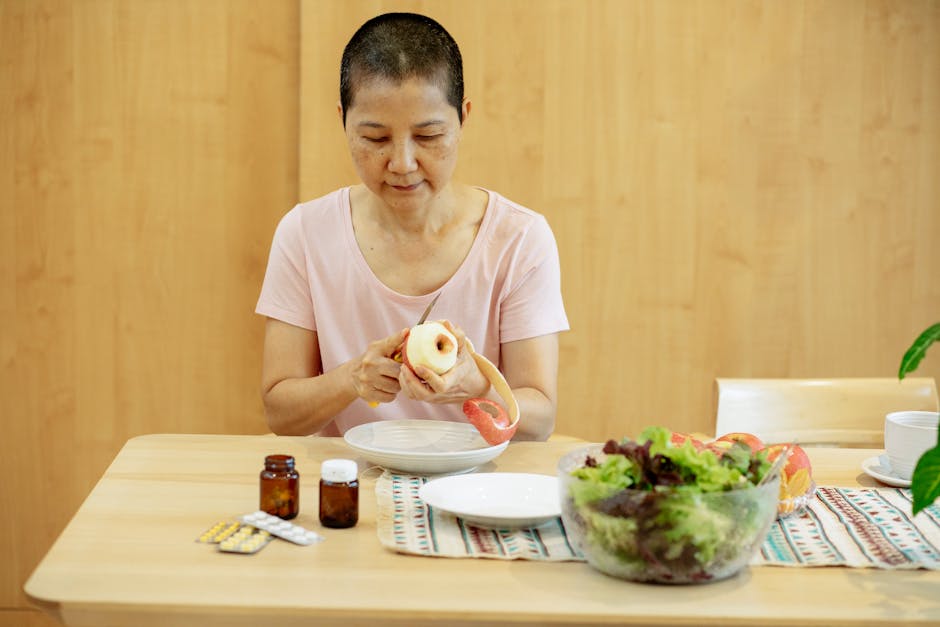Achieving a Balanced Diet for Optimal Healing
Embarking on a journey towards better health? A balanced diet is your best ally! 🌟 Eating well not only fuels your body but also plays a crucial role in healing and recovery. Let’s explore how you can achieve a balanced diet that supports optimal healing.
Table of Contents
1. Introduction
2. The Importance of a Balanced Diet
3. Key Components of a Balanced Diet
4. Tips for Achieving a Balanced Diet
5. Conclusion
6. FAQ
Introduction
Picture this: you’re recovering from an illness or injury, and you want to bounce back stronger than ever. What’s your secret weapon? It’s not just medication or bed rest—it’s your diet! A balanced diet is fundamental to the healing process, providing the nutrients your body needs to repair and rejuvenate.
The Importance of a Balanced Diet
Our bodies are like complex machines, requiring the right fuel to function optimally. A balanced diet ensures that you get a variety of nutrients essential for healing, such as proteins for tissue repair, vitamins for immune support, and minerals for cellular functions.
Eating a balanced diet can help:
✅ Boost your immune system
✅ Speed up recovery time
✅ Enhance energy levels
✅ Improve overall well-being
Key Components of a Balanced Diet
Creating a balanced diet isn’t just about eating your greens (though they do help 😊). Here are the essential components:
Proteins 🍗
Proteins are the building blocks of life. Incorporate lean meats, fish, eggs, beans, and nuts into your meals to aid in tissue repair and growth.
Carbohydrates 🍞
Carbs are your body’s primary energy source. Opt for whole grains, fruits, and vegetables to keep your energy levels up and support the healing process.
Fats 🥑
Not all fats are created equal. Focus on healthy fats found in avocados, nuts, and olive oil, which help with nutrient absorption and reduce inflammation.
Vitamins and Minerals 🍊
Each vitamin and mineral plays a unique role. For example, Vitamin C aids in wound healing, while calcium and magnesium support bone health. Eat a colorful array of fruits and veggies to ensure a good mix.
Tips for Achieving a Balanced Diet
Ready to transform your diet? Here are some practical tips:
🔹 Plan your meals: Create a weekly meal plan to ensure variety and balance.
🔹 Stay hydrated: Water is vital for every bodily function, including healing!
🔹 Listen to your body: Pay attention to hunger cues and eat mindfully.
🔹 Experiment with recipes: Trying new foods can make eating healthy exciting.
🔹 Seek professional advice: Consult a nutritionist if you’re unsure where to start.
Conclusion
Achieving a balanced diet is an empowering step towards optimal healing. By understanding the importance of various nutrients and incorporating them into your daily meals, you’re setting the stage for a healthier, more vibrant you. Remember, it’s not about perfection but about making consistent, mindful choices that benefit your body and mind.
FAQ
What is the quickest way to ensure I’m getting a balanced diet?
Start by incorporating a variety of food groups into each meal. Aim for colorful plates with proteins, carbs, and healthy fats to cover your nutritional bases.
Can a balanced diet really speed up healing?
Absolutely! A diet rich in essential nutrients can enhance your immune response, reduce inflammation, and provide energy, all of which contribute to faster recovery.
How can I keep my diet balanced when I’m always busy?
Meal prepping is a lifesaver! Spend a few hours each week preparing meals in advance. This ensures you have healthy options ready when time is tight.
Embark on your journey to wellness today, and let your diet be your compass! 🥗

